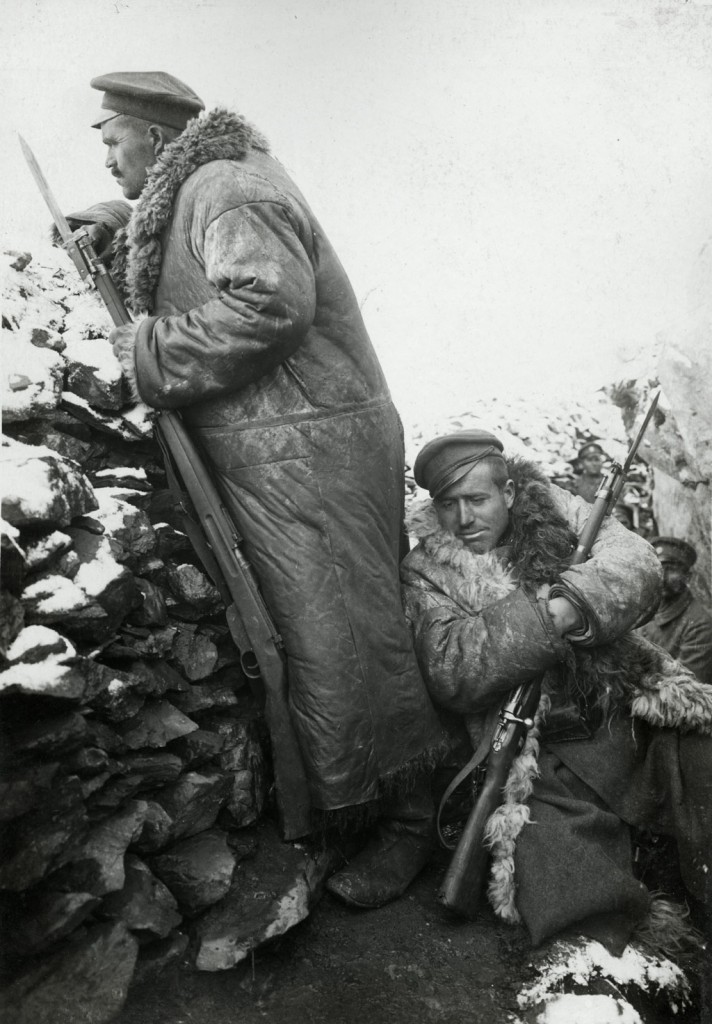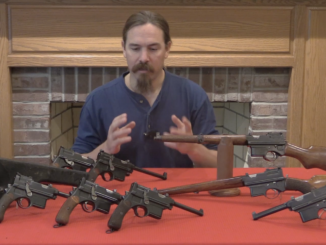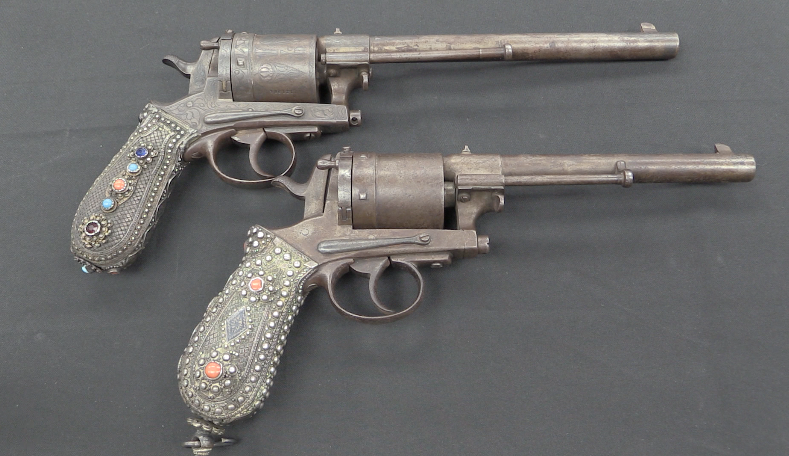
Bulgarian troops in the First World War, with fixed bayonets on a Steyr M95 rifle and carbine.

Before we can really take a close look at today’s rifle, some background is necessary. Ferdinand von Mannlicher was a very successful Austrian gun designer, with patents on several major ideas, and successful rifle and […]

With the Model 1896 pistol, Ferdinand Mannlicher made an effort to improve the ballistics of his pistols and make them less awkward, by moving to a locked breech action and a bottlenecked higher velocity cartridge. […]

This is quite the eye-catching pair of revolvers… The Model 1870 Gasser was a behemoth of a pistol designed by Leopold Gasser for the Austro-Hungarian cavalry – it was built around the 11x36mm cartridge used […]
© 2025 Forgotten Weapons.
Site developed by Cardinal Acres Web Development.

Any idea where this was taken?
None at all.
They look Bulgarian to me. Wrong hat for an KuK soldat. I may be wrong however… Great photo!
Hmm…could be. I’m sure one of our folks with more Balkans knowledge will take a look later today…
I agree. I don’t ever recall seeing a WWI era Austrian soldier wearing a peaked style cap, only their kepis, the Bergmutze type, and perhaps some form of “side” cap (“service” cap and “bonnet de police” in U.S. and French parlance respectively).
Yeah, I feel same way. These are not really ‘our’ guys (which included both of my grandfathers).
Ahhh, the folks who were trying to Kill my Gran Pa…(He was a Corporale-Maggiore in the Royal Italian Army in WW I)
Could they belong to one of the Austrian Polish Legions?. They wore a peaked cap.
Polish Legions
Didn’t the Polish peaked cap have four corners like czapka? I highly doubt they’re Polish, in ANYBODY’s army in WWI
In WWI there were Polish units in the Austro-Hungarian, Russian, and French armies. Those fighting for the Austrians wore a regular peaked cap, as Pilsudski himself wore.
Heh Turk, that would be my grandfather on the Austrian side of the lines.. I’m not an expert but those hats definitely do not look correct. There were a variety used by the Austrians, but the ones I know of had belt-like pieces of cloth joined by two buttons (vertical) at the center-front of the hat. This would usually be above the brim but I know one example where a narrow version of what I just described joined below the brim.
What I see is a typical day in the life of a soldier in winter, in the trenches .. and this on a GOOD day!!! Great coat, worthless headgear! The word is MISERABLE!
My 1st thought was the worthless headgear and lack of anything on the hands. I have to believe that frost bite/freezing on face, ears and fingers would have been very high.
I too would think that coat would be fine as it both stops the wind and has a great inside insulator. Plus it looks like they have a wool coat on under the leather outside coat.
I’ve stood outside in sub -25F for hours with my the trunk of my body attired like them and didn’t get cold at all. But I also had good head and hand gear. Without the head/hand gear it would have been a few minutes.
Bulgarian found same hat and uniform on axes forum.
The guys in the background, with cockades on their caps, do look bulgarian.
THose are Bulgarian soldiers, not Austrohungarian Kaiserliche und Königliche troops. Gets confusing, what with the Steyr-Mannlicher rifles and so on.
Caption Time
Guy on the ground: “Hey Rudolf, that cabbage from last night was a lot better going down than coming out!”
Those are indeed Bulgarian soldiers. The straight-pull Mannlicher M 95 rifles and carbines were regulation issue in the Royal Bulgarian Army and remained so well after 1945, albeit with 2nd rate troops. As for the photo itself, I recall having seen a very similar one, perhaps in the excellent book by Alexandr Vchkov on Bulgarian uniforms and kit, published in Sofia in 2010.
These are Bulgarian soldiers form 3th brigade of 6th Bdin inf. division, on position near to peak Pelister, Baba mountain, west of Bitola (Macedonia), Macedonian front, World War I, 1917.